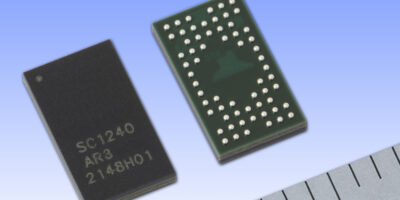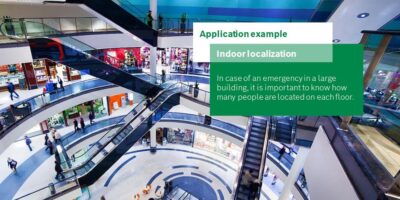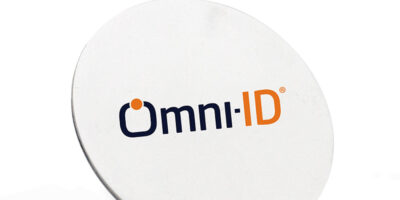Radio wave ranging sensors announced by Socionext are able to detect minor movements in positional information for tracking. The SC1240 series radio wave ranging sensors use the 60GHz band and have a built-in signal processing circuit for detecting the position and movement of a person.
The sensor that complies with the global broadband 60GHz radio equipment standard. It is able to detect the position and movements of a person, said Socionext and its high precision sensing and built-in signal processing circuits use a 6.8GHz (57.1 ~ 63.9GHz) wide band to detect minor movements as positional information, enabling it to be used in advanced applications such as tracking human movements and operation by gestures.
The sensor has built-in range finding and angle calculating signal processing circuitry, believed to be the first in the industry. It is based on the company’s mmwave radio communication LSIs and 24GHz radio wave range finding sensors.
The integrated SC1240 series uses 3D position information without the need for high frequency or advanced signal processing technology, claimed Socionext. It includes multiple antennas, wireless circuitry, ADCs, FIFO memory, SPI (serial peripheral interface), a sequencer that flexibly changes the duty cycle and controls power consumption, and a signal processing circuit for distance measurement and angle calculation. It also provides an autonomous activation function. These features allow users to easily obtain the height and positional data on the X, Y and Z planes for precision sensing actions such as the detection of multiple people or gesture without contact.
Average power consumption is 0.72mW at 0.1 per cent duty cycle operation, reported Socionext. The sensor is supplied in an FC-BGA measuring 4.0 x 7.0 x 1.2mm.
Sample shipments are scheduled for Q2 2022, and mass production in Q1 2023.
Socionext supplies SoCs for use in automotive, data centre, networking and smart devices.
Socionext Inc. is headquartered in Yokohama, and has offices in Japan, Asia, the United States and Europe.
Socionext Europe has headquarters is in Frankfurt, Germany with offices in Munich, Germany and Maidenhead, UK. The Munich Design and Support Centre specialises in embedded graphic, hardware and software product development for the automotive sector. The Maidenhead office in the UK supports Socionext’s IP Development & Engineering Centre with a focus on high speed data conversion IP. Socionext Europe offers customers a range of custom SoCs.







